How to choose quality bedding?
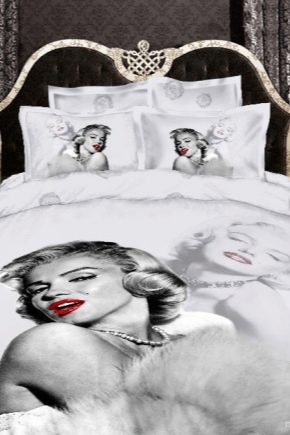
In order to wake up in high spirits in the morning, it is necessary to provide for a quality night's sleep, which largely depends on good bedding. In this article we will talk about the materials from which it is made.
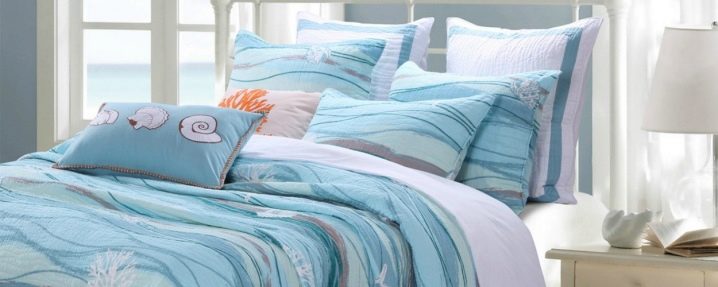
Basic quality parameters
Adequate sleep affects the general condition of a person, his mood and health. Considering that we spend one third of our lives in the arms of Morpheus, a person needs a good bed and high-quality bedding to ensure comfort and good rest.
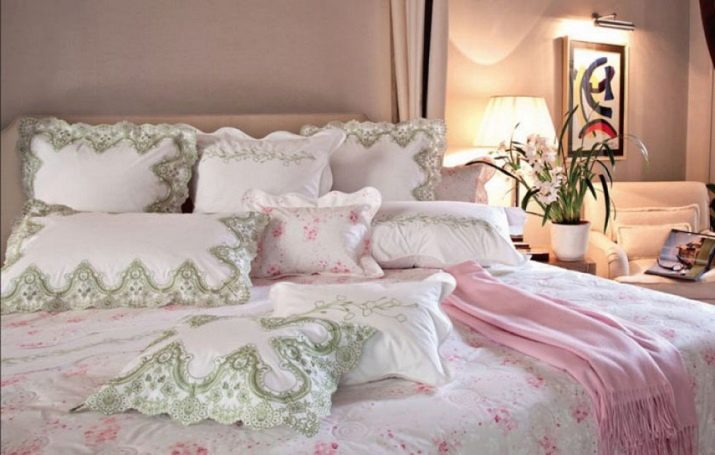

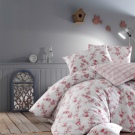
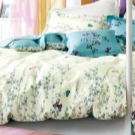
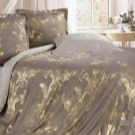

In the retail trade, manufacturers today offer a huge selection of bedding sets that differ in the structure of the fabric, density, and a variety of colors. On sale there are bedding sets from the cheapest - budget proposals to the most expensive - luxury.
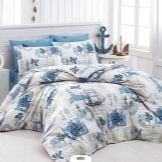
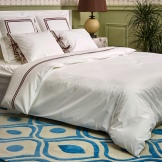
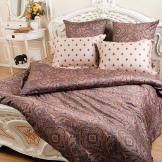
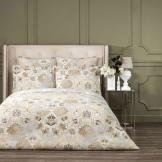
Consider the main characteristics that you should pay attention to when buying. An important criterion indicated on the labels is the quality class of the linen, it is determined by different indicators of cotton, silk and linen fabrics.
- The quality class of cotton fiber fabrics shows the percentage of trash in the fabric. This indicator is classified into five steps, starting from the highest and ending with weed. This classification determines the quality and appearance of the bed linen.
- The quality class of silk bedding is determined by the density of the threads in the warp. The unit of density is mommee or gram per square meter. Elite underwear has indicators from 22 to 40 momme's.
- The quality class of linen bed linen is determined by the properties of environmental friendliness and density. Without impurities, linen should have a density of 120-150 g per sq. m.
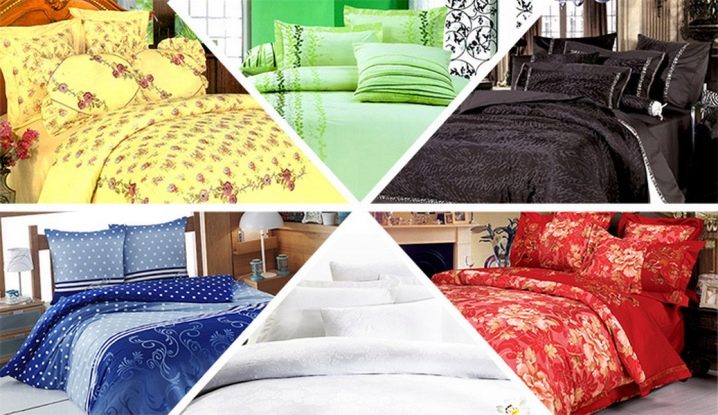
The strength of the linen and its durability are among the main indicators when choosing. A problem of this kind can be found after the first few washes, since the loose fabric of bed linen quickly loses its appearance and becomes unusable.
The properties of hygroscopicity and air permeability are very important in the summer due to the ability of the human body to sweat. According to these properties, natural fabrics provide more comfortable conditions than synthetic ones. The dyes used in the manufacture of linen and giving it a beautiful and bright outdoor look should be hypoallergenic and resistant to regular washing. Density is the main criterion, which, first of all, you need to pay attention to when buying, because the durability of bed linen depends on it. The density is determined depending on the number of fibers per square meter. cm and is reflected by the manufacturer on the label:
- very low - from 20-30 fibers per 1 sq. cm;
- low - from 35-40 fibers per 1 sq. cm;
- average - from 50-65 fibers per 1 sq. cm;
- above average - from 65-120 fibers per 1 sq. cm;
- very high - from 130 to 280 fibers per sq. cm.

The density depends on the type of fabric from which the set is made, the method of weaving and the technology of twisting of the thread:
- natural silk - from 130 to 280;
- flax and cotton - not less than 60;
- percale, satin - more than 65;
- cambric - at least 20-30 fibers per 1 sq. cm.
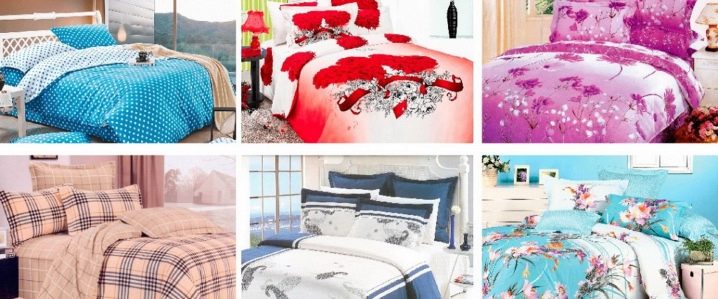
First of all, when entering a store and choosing a product, we look at the packaging. It must be of high quality, since its task is to protect bed linen from the influence of the environment and to secure it during transportation and storage.The quality of the goods in it also depends on the appearance of the package. In accordance with GOST, each product must be sewn from a single-cut fabric, that is, additional seams on the sheet and duvet cover are not allowed, such seams worsen the strength of the product. If possible, you should check how strong the main seams on the products are. If, when stretching the fabric, you see gaps in the seam area, then you should refrain from buying.
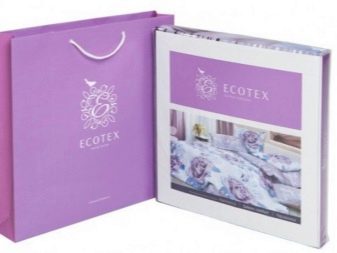
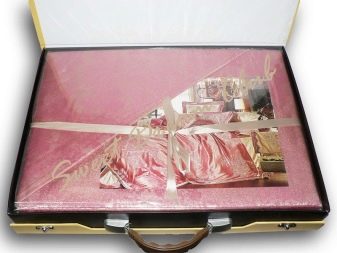
In the production of colored laundry, a good dye must be used that can withstand high temperatures during washing. On the manufacturer's label, there must be an inscription with a recommendation about the mode and the required washing temperature. To check the quality of the dye, rub the fabric with your hand: the presence of paint on the palm of your hand indicates a low-quality product. The blurred color of the pattern indicates that the laundry may shed during washing.
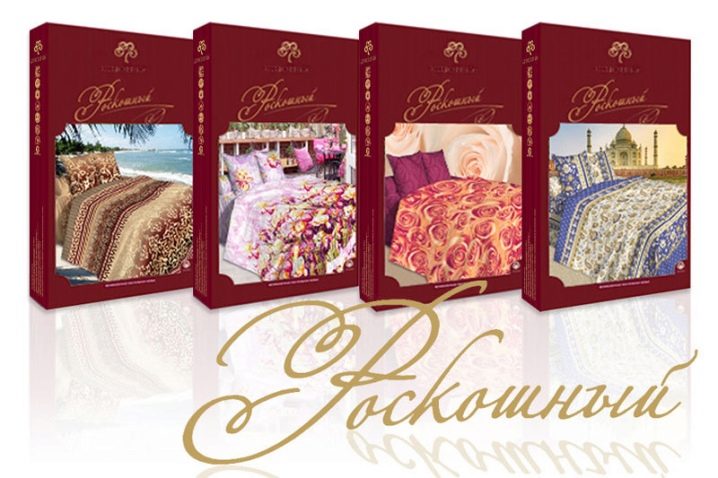
New linen made in accordance with GOST has a textile smell, the presence of any other smell (chemistry, mold) indicates an incorrect production technology and inadequate storage and transportation.
Rating of materials
Natural
Bed linen is made from various fabrics, but remember that it is best to choose one that is made from natural raw materials. We present the characteristics of the materials from which the bedding is made.
- Natural silk is elite and refers to expensive materials (this is perhaps its only drawback). Silk is a fabric that can warm in winter and bring coolness to summer night heat. Silk underwear looks gorgeous, feels good, is very durable, but needs proper care. The history of this textile goes back several millennia.
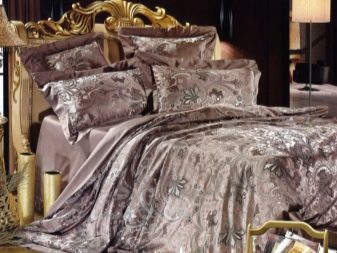
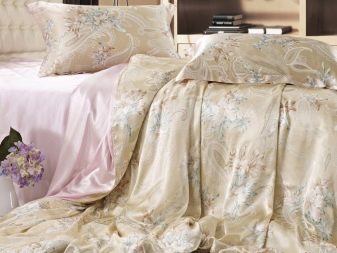
For the production of fabrics, fibers are extracted from silkworm cocoons, therefore such textiles are considered the most expensive and luxurious in the world. The material is gentle, flowing, gives a full healthy sleep and provides pleasant sensations. The fabric has good air permeability properties, contains substances that slow down the aging process, absorbs moisture well, but does not completely absorb it, so the skin does not dry out.
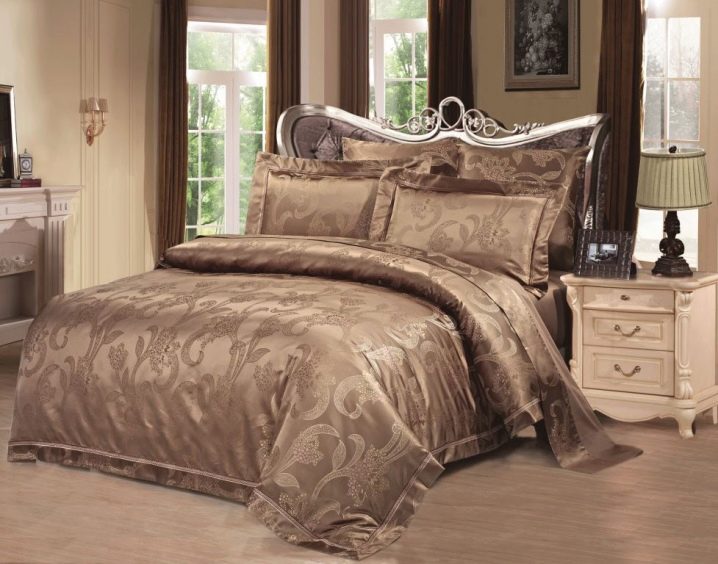
- Linen meets all the necessary requirements: comfortable to the body, does not electrify, does not fade, does not fade, perfectly absorbs moisture, repels UV rays. Flax is environmentally friendly because it is grown without the use of pesticides. It has good heat dissipation and the highest strength, such underwear will serve you faithfully for many years.
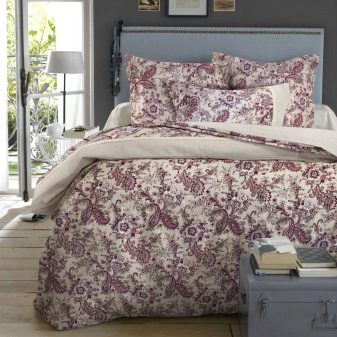
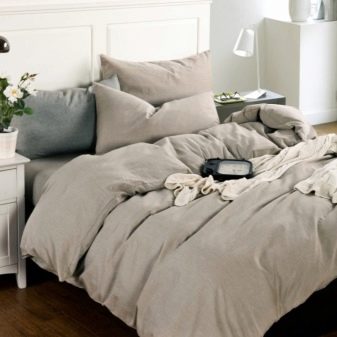
On first use, the bed linen feels rough on contact with the body, but after two washes it becomes very comfortable. The only drawback of linen is that the fabric is difficult to iron. Natural linen is easily identified by the knots on the surface of the fabric.
- Blended fabric consists of cotton and linen fibers, ironing much easier than linen, the strength is lower. Some manufacturers make sets that include a linen sheet and a linen / cotton blend of duvet cover and pillowcases.
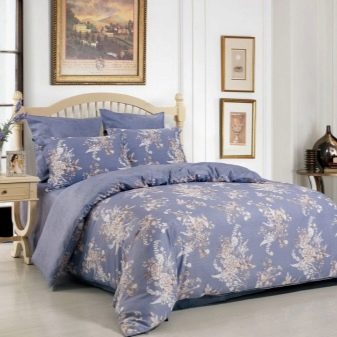
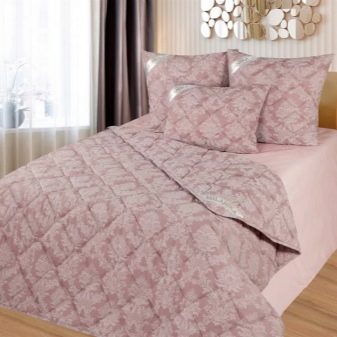
- Bamboo appeared on the Russian market recently. The linen is shiny and soft, very comfortable to the body at any time of the year, has antimicrobial properties and a fairly high strength.
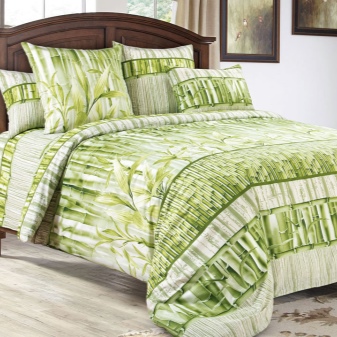
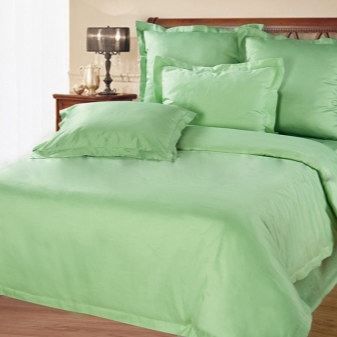
- Cotton is the most common material for making linen. Prices depending on the manufacturer are very different due to the quality and processing technology of raw materials. When washed and used, cotton is much more comfortable than linen. The best and most durable cotton is considered to be produced in Egypt.
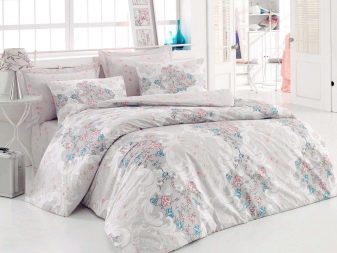
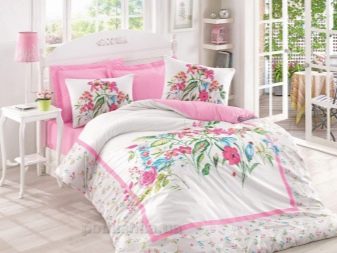
- Satin much softer than 100% cotton. It is made from twisted cotton fibers. In its manufacture, both natural and synthetic threads are used. It looks like silk, but the cost is much lower.
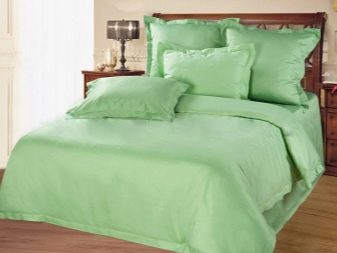
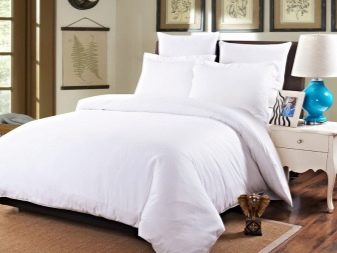
Satin linen does not wrinkle. The reverse side of the fabric has a rough structure and therefore does not slip. The advantage of satin is that it is durable, practical and warms in winter. In summer, it is better to refuse satin and prefer materials that better allow air to pass through.
- Poplin outwardly very similar to coarse calico, but during its production silk, viscose and synthetic threads are added to the cotton fibers. The main difference from other types of bed linen is that in its manufacture, threads of different widths are used, thus creating a ribbed fabric. Advantages of poplin: the fabric is very soft and elastic, therefore it is pleasant to the body; withstands many washes, has good hygroscopicity, retains heat well, does not fade.
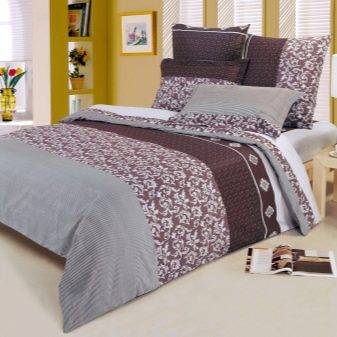
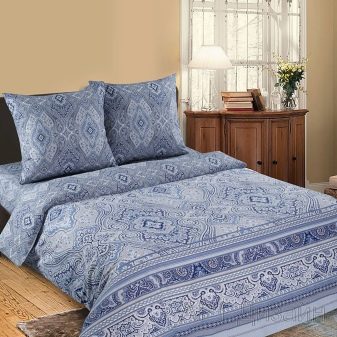
- Percale made from cotton with a long pile. The material is made by weaving fibers and adding untwisted yarn, which gives strength and smoothness to the fabric. Percale has a high density and, accordingly, a long service life without loss of high-quality appearance. Advantages: creates comfortable conditions during sleep, has a velvety and delicate surface structure, has excellent breathability, retains heat well.
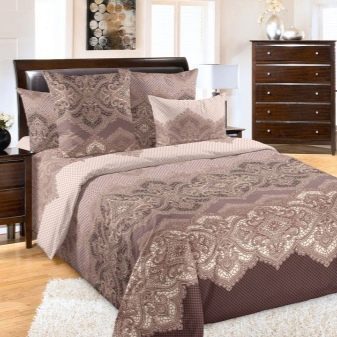
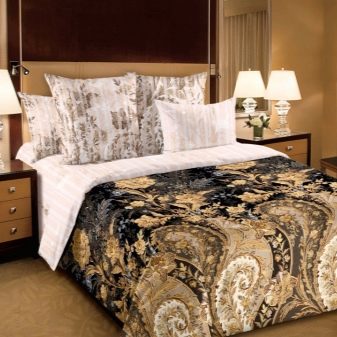
- Batiste - a sophisticated, translucent and delicate material that is used to make the bed only on special occasions. The fabric is made from the finest high quality twisted yarn, consisting of a mixture of cotton, linen and synthetic fibers. For the first time such a fabric was made by Baptiste Cambrai in the 13th century in Flanders. To improve the strength, the fabric is subjected to mercerization (inventor J. Mercer) - treated with alkali.
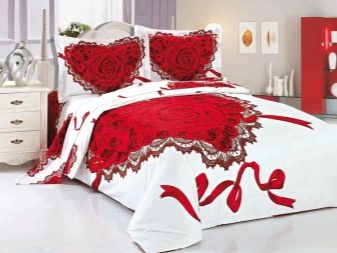

Delicate fabric requires very careful care, so washing should be done only in manual mode at a temperature not exceeding 30 ° C, without spinning. Ironing is done through gauze fabrics and only from the seamy side. Advantages: it has a silky delicate surface, good air permeability, very comfortable to the body, hypoallergenic, retains its original appearance well.
- Ranfors made from refined cotton. It should be noted that the ability of the fabric to shrink depends on the quality of cleaning the cotton, so ranforce practically does not give it after washing. In the manufacture of fabric, a diagonal weave is performed, which gives increased strength and a smooth surface. Advantages of ranforce: it has a light and delicate surface, has high strength, tolerates washing well, retains its original appearance for a long time, does not electrify.
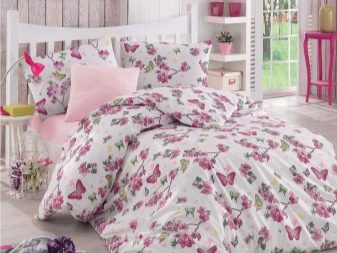
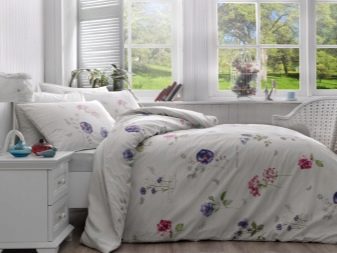
Ranfors is highly hygienic, as dyes of excellent quality are used in its production. Ranfors, due to the similarity of structures, is often confused with coarse calico or poplin, but it should be noted that it has a great cost.
Synthetic
Synthetic bedding is made from polyester and cellulose. There is a large selection of synthetic fiber linen on sale, they are purchased because of its low cost, but it does not need to be ironed, it dries on the balcony within 10 minutes, has a slippery surface, is not hygroscopic and airtight, uncomfortable to the body, it is cold to sleep on it , leads and spools are quickly created.
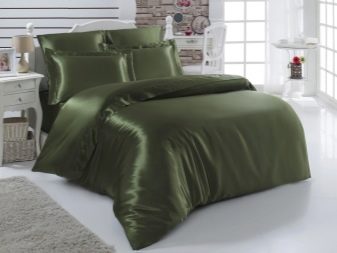

Polycotton linen is made from a mixture of cotton and synthetics, has bright beautiful colors, is easy to maintain, durable, but uncomfortable to the body. Scientists claim that synthetic underwear is harmful to the human body. Such claims should be heeded because there have been many studies that have confirmed this.

Such bed linen disrupts heat exchange, does not absorb moisture, and when it is used, proper ventilation of the air is not carried out. Synthetic underwear can cause dermatitis, it accumulates microorganisms that cause fungal diseases.
Reviews
The most enthusiastic reviews can most often be found about natural silk linen.Buyers say that silk has a delicate surface and a very beautiful appearance that does not cause allergies. It is thermally conductive, therefore, regardless of the season it is very comfortable to sleep on it, has high strength, such bed linen will last a very long time. In order for silk bedding to retain its original appearance, strict rules must be followed:
- when completely wet, the fabric becomes very fragile, so it can only be washed by hand (by soaking) or in a delicate mode at a temperature not exceeding 40 ° C, in a completely dissolved soap solution;
- whitening is unacceptable;
- rinsing is carried out several times, until the detergent is completely washed off;
- spinning is carried out manually, carefully and only through a towel;
- you can dry the fabric only in a dark place;
- iron only at the lowest temperature setting.
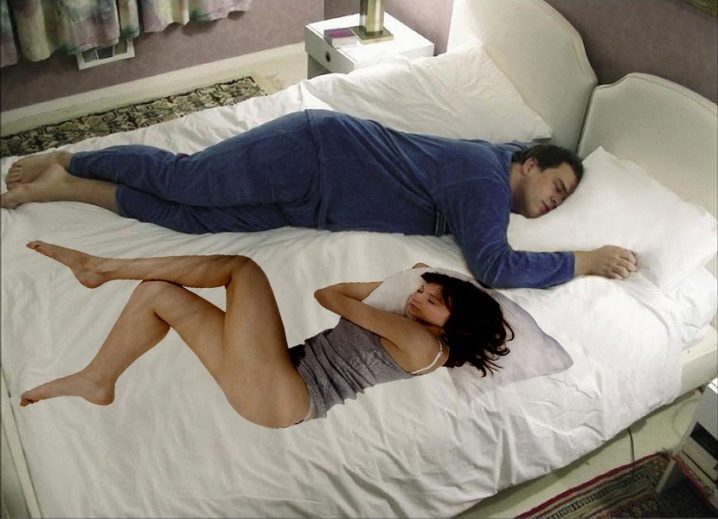
Various brands are trying to reproduce the properties of natural silk in cheaper artificial analogues. Viscose has similar properties, which is made from wood pulp and has a flowing and smooth appearance, it is very gentle to the touch, hygroscopic and breathable, hypoallergenic. Buyers note that the viscose analogue crumples strongly, does not have the necessary strength, does not have healing properties and the necessary waterproofness.

The bulk of domestic manufacturers are oriented towards the mass consumer, offering bed linen at affordable prices. Most companies make cotton-based bedding. From such a variety, you can always choose a quality set of natural bedding, the most practical in terms of price and quality is poplin.
For information on how to choose quality bedding, see the next video.













The comment was sent successfully.